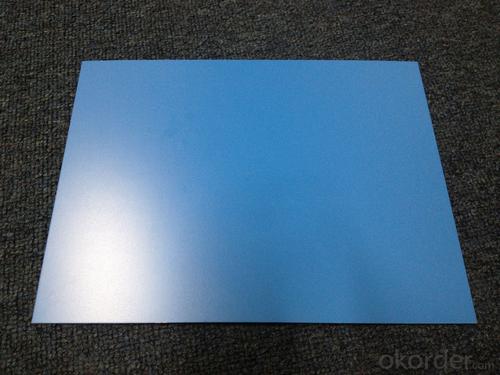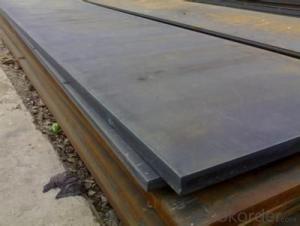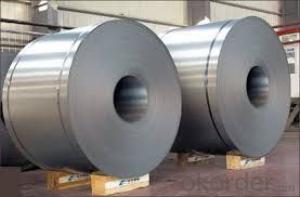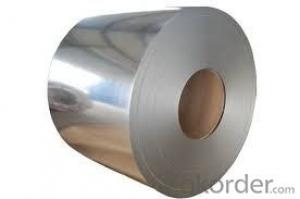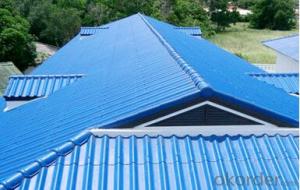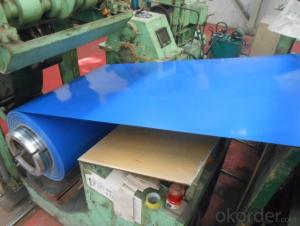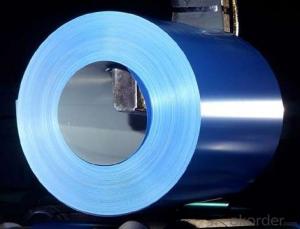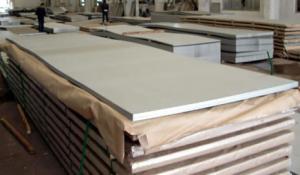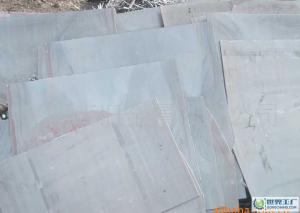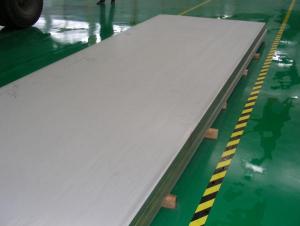PRE-PAINTED GALVANIZED STEEL SHEET
- Loading Port:
- Tianjin
- Payment Terms:
- TT OR LC
- Min Order Qty:
- -
- Supply Capability:
- 8000 m.t./month
OKorder Service Pledge
Quality Product, Order Online Tracking, Timely Delivery
OKorder Financial Service
Credit Rating, Credit Services, Credit Purchasing
You Might Also Like
PRE-PAINTED GALVANIZED STEEL SHEET
THICKNESS:0.18mm-1.5mm
WIDTH:900mm-1250mm
COATING MASS:Z30-Z275
PAINT:PE、HP、HDP、PVDF、SMP、MATT、PVDF
COLOR:RAL Scale
COIL INNER DIAMETER:508mm/610mm
COIL WEIGHT:3mt-7mt
BASE MATERIAL:Hot-dip GALVANIZED Steel
- Q: How are steel sheets protected from rust and corrosion?
- Steel sheets are protected from rust and corrosion through a process called galvanization, which involves coating the sheets with a layer of zinc. This zinc layer acts as a barrier, preventing moisture and oxygen from reaching the steel surface and causing rust.
- Q: How do steel sheets perform in weather resistance?
- Steel sheets are highly resistant to weather conditions, including extreme temperature variations, moisture, and UV radiation. They form a protective layer that prevents corrosion, ensuring their durability and longevity even in harsh outdoor environments.
- Q: What is the average lead time for manufacturing steel sheets?
- The average lead time for manufacturing steel sheets can vary depending on various factors such as the size and complexity of the order, the current production capacity, and any specific requirements. However, on average, it typically ranges from a few weeks to a couple of months.
- Q: What is the typical weight of steel sheets?
- Steel sheets come in a variety of sizes, thicknesses, and types, so their typical weights can differ. In general, the weight of steel sheets can range from a few pounds to several tons. For instance, a regular 4x8 foot steel sheet that is 1/4 inch thick weighs approximately 110 pounds, while a larger 10x10 foot sheet that is 1 inch thick can weigh over 1,000 pounds. It should be noted that these estimates are only rough guidelines, and the weight can vary depending on specific factors like the alloy composition or any coatings applied to the sheets.
- Q: Do steel sheets have any environmental benefits?
- Yes, steel sheets have several environmental benefits. Firstly, steel is a highly recyclable material, meaning that it can be reused multiple times without losing its quality. This significantly reduces the need for new steel production, which in turn reduces the extraction of raw materials and the energy consumption associated with manufacturing. Recycling steel also helps in reducing greenhouse gas emissions and conserving natural resources. Additionally, steel sheets are extremely durable and long-lasting. They have a high resistance to corrosion, which means they require minimal maintenance over their lifespan. This durability reduces the need for frequent replacements, thus reducing the demand for new steel production and the associated environmental impact. Moreover, steel sheets can contribute to energy efficiency in buildings. When used as roofing or cladding material, steel sheets can provide excellent insulation properties, helping to reduce heating and cooling energy requirements. This leads to lower energy consumption and, consequently, a reduced carbon footprint. Furthermore, steel sheets are fire-resistant, which enhances the safety of buildings and reduces the risk of fire-related accidents. This can have positive environmental impacts by minimizing the release of harmful emissions and pollutants resulting from fires. In conclusion, steel sheets offer various environmental benefits, such as recyclability, durability, energy efficiency, and fire resistance. These qualities contribute to a more sustainable and eco-friendly approach in construction and manufacturing industries.
- Q: What material can be replaced by 345D steel plate?
- Higher than its level of material of steel plate can replace.Q345D. yield in more than 345 of the steel.D class -20 degree of shock. Can replace the Q370D.Q390D.Q420D.Q460D.Q550D.Q690D., generally in engineering machinery can be higher generation low.Steel plate is made of molten steel, cooled and compressed into flat steel. The steel plate is flat, rectangular, and can be rolled directly or cut from a wide strip of steel. Steel plate by thickness, thin steel plate <4 mm (thinnest 0.2 mm), thick steel plate 4~60 mm, extra thick steel plate 60~115 mm.
- Q: What is the process of applying insulation materials to steel sheets?
- The process of applying insulation materials to steel sheets typically involves cleaning the surface of the steel sheets to remove any dirt or debris. Then, an adhesive or bonding agent is applied to the steel sheets, and the insulation material is placed on top of it. The insulation material is pressed firmly onto the steel sheets to ensure proper adhesion. In some cases, additional layers or coatings may be applied to enhance the insulation properties or protect the insulation material.
- Q: What is the average thickness of galvanized steel sheets?
- The average thickness of galvanized steel sheets typically ranges from 0.8mm to 3mm, depending on the specific application and industry standards.
- Q: Can steel sheets be used in the telecommunications industry?
- Indeed, the telecommunications industry can make use of steel sheets. Given their strength, durability, and capability to safeguard delicate equipment, steel sheets find frequent application in various sectors of the telecommunications industry. They are commonly utilized in the production of communication towers, antenna mounts, equipment cabinets, and enclosures. By providing structural support, steel sheets prove resilient against severe weather conditions, including powerful winds, extreme temperatures, and heavy loads. Furthermore, steel sheets can be conveniently fabricated and tailored to meet specific demands, rendering them a favored option within the telecommunications industry.
- Q: What is the typical price difference between galvanized and non-galvanized steel sheets?
- The typical price difference between galvanized and non-galvanized steel sheets can vary depending on factors such as size, thickness, and market conditions. However, in general, galvanized steel sheets tend to be more expensive than non-galvanized ones, typically costing around 10-20% more.
Send your message to us
PRE-PAINTED GALVANIZED STEEL SHEET
- Loading Port:
- Tianjin
- Payment Terms:
- TT OR LC
- Min Order Qty:
- -
- Supply Capability:
- 8000 m.t./month
OKorder Service Pledge
Quality Product, Order Online Tracking, Timely Delivery
OKorder Financial Service
Credit Rating, Credit Services, Credit Purchasing
Similar products
Hot products
Hot Searches
Related keywords



